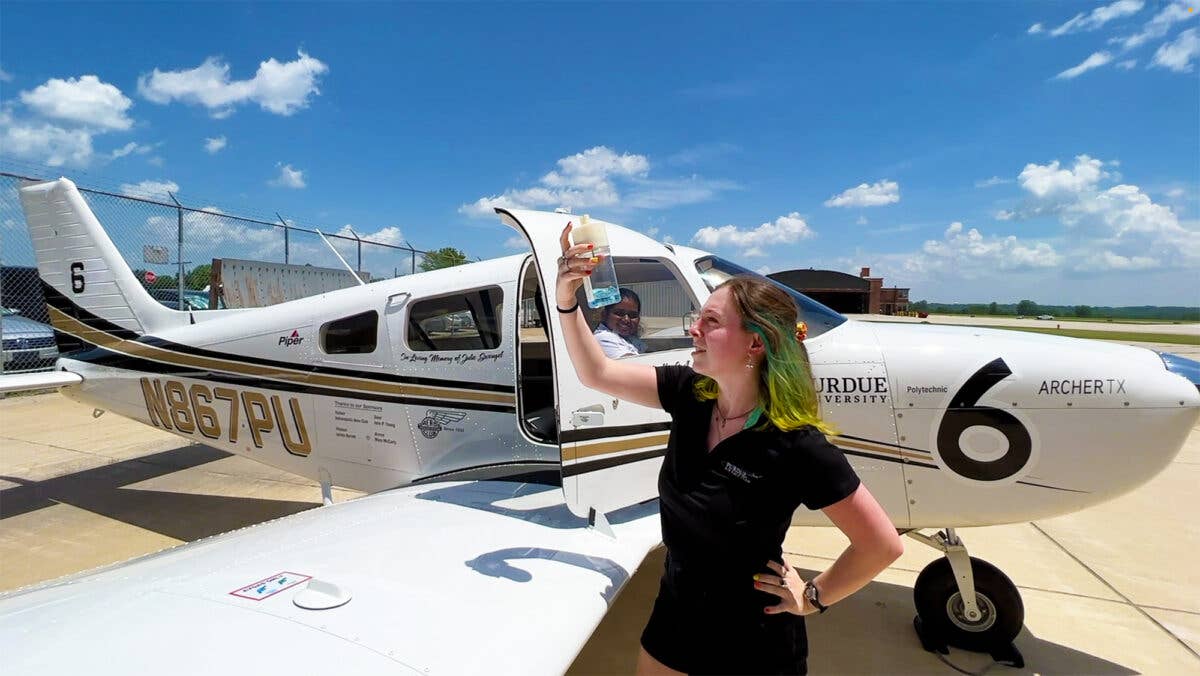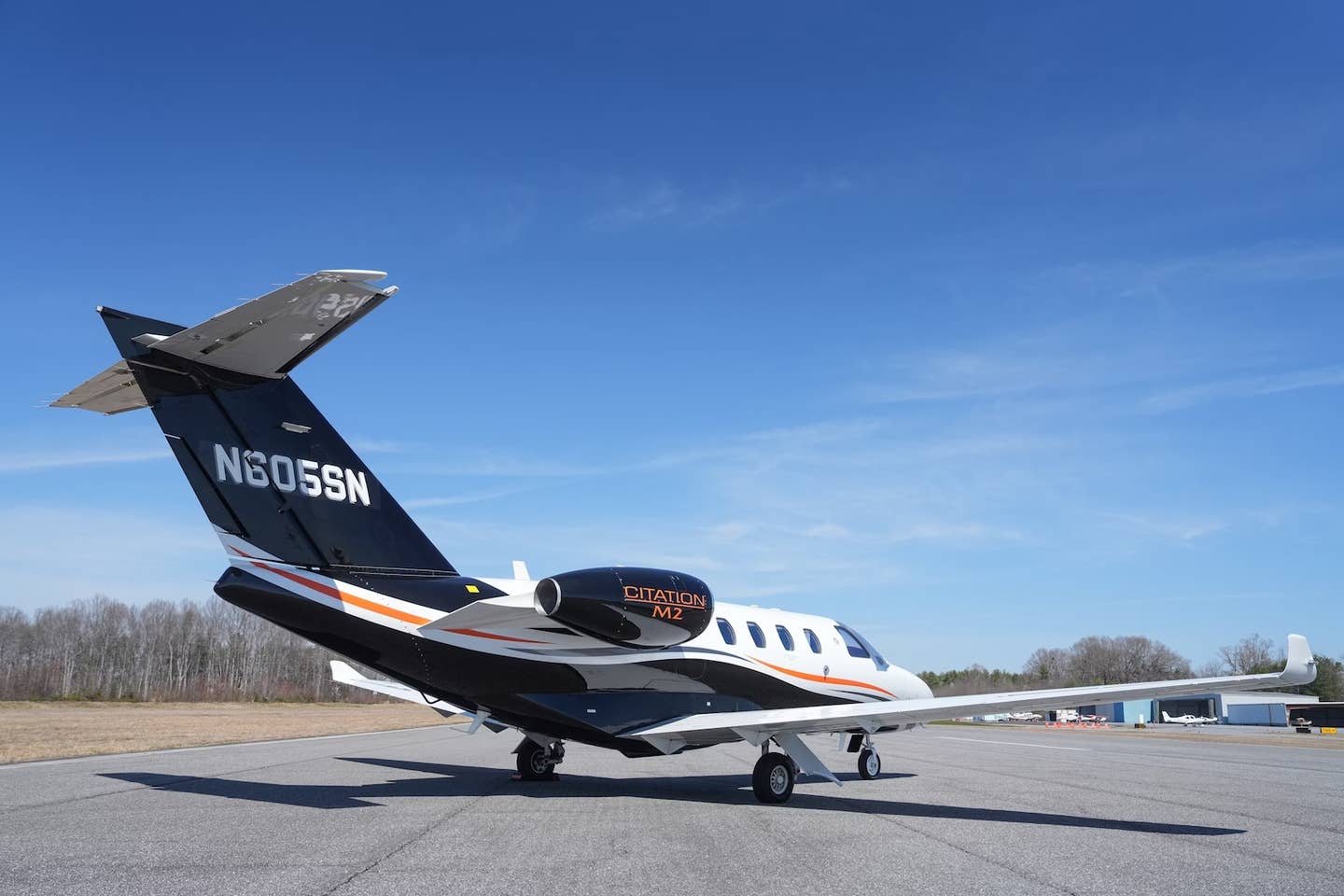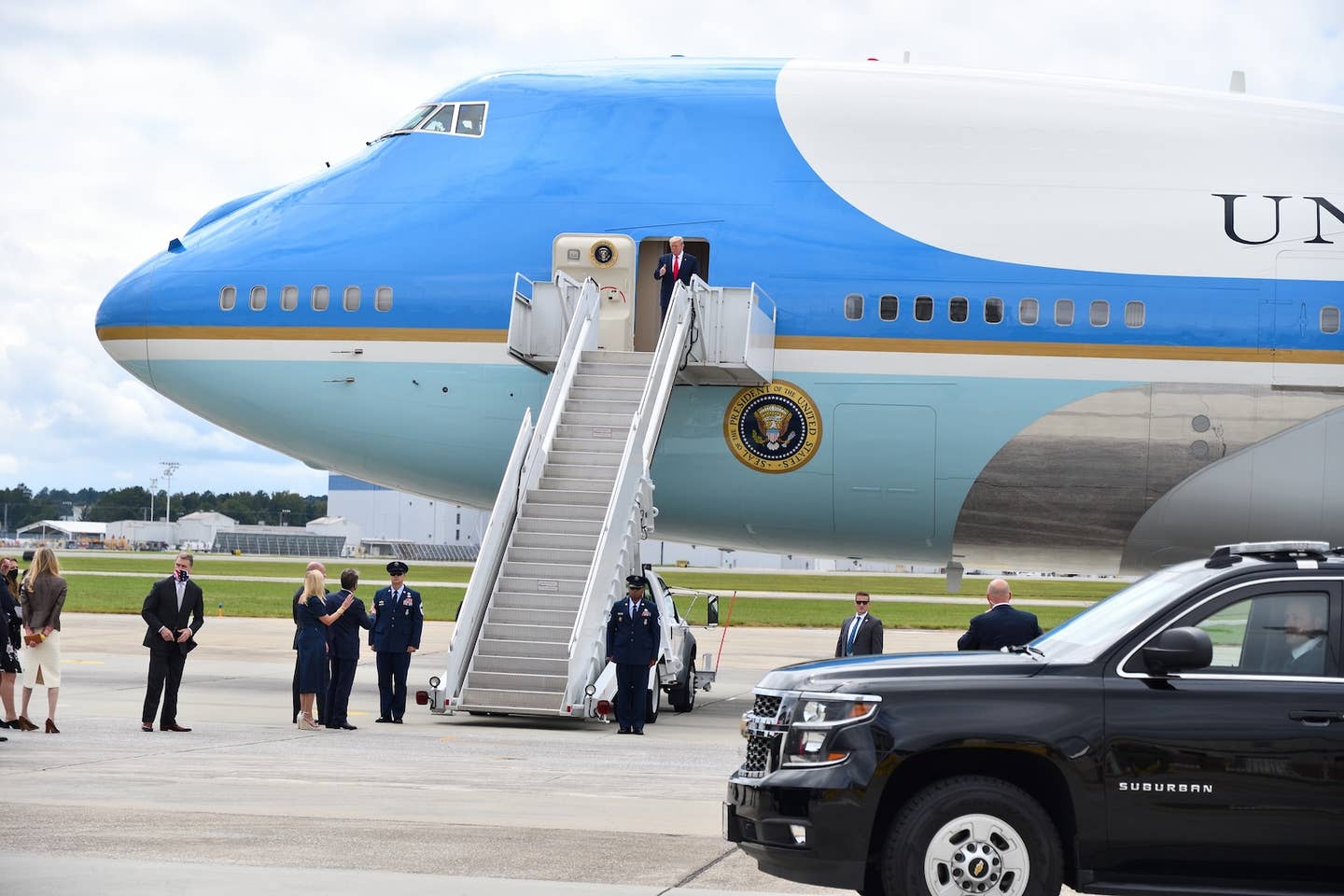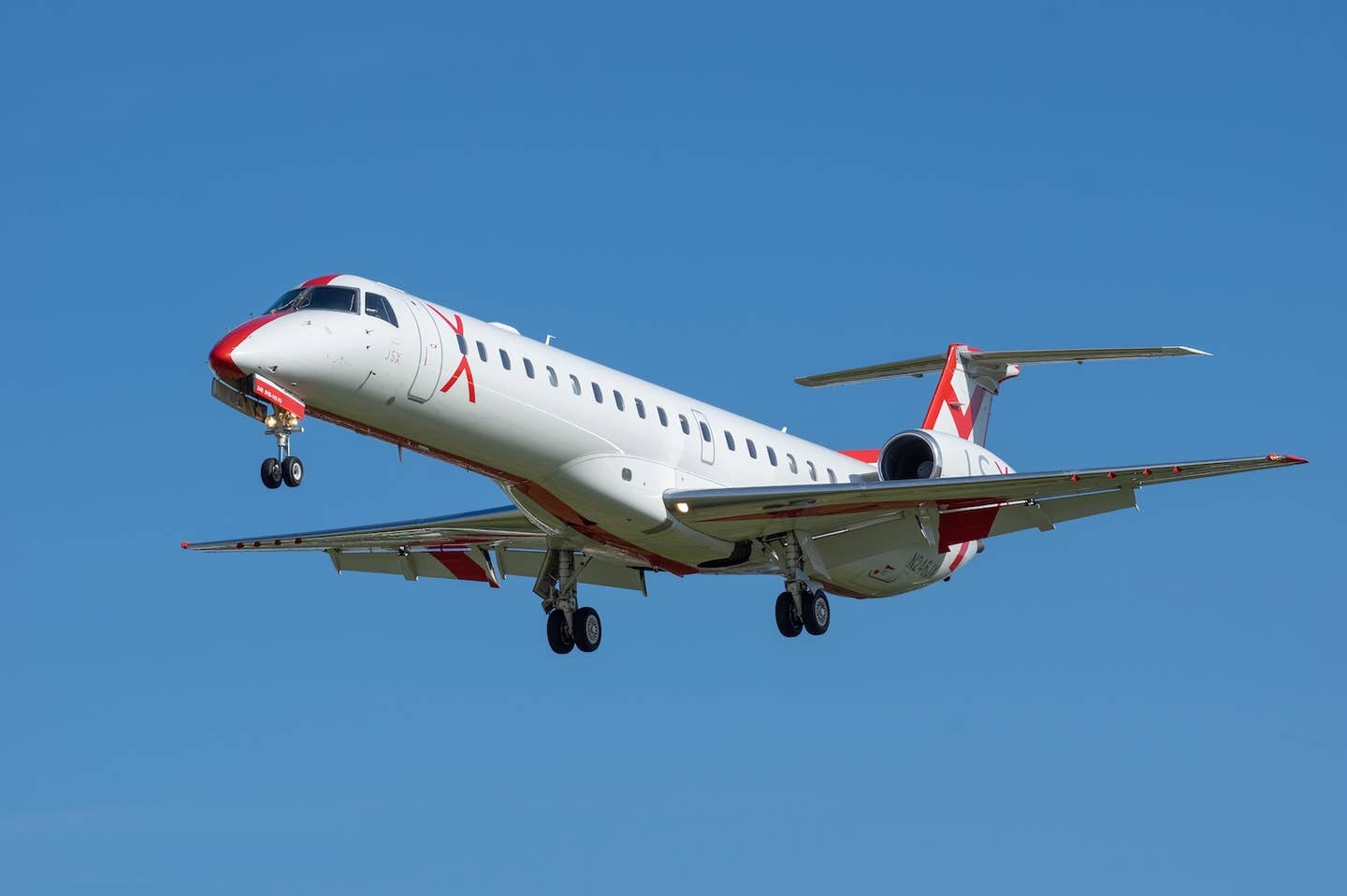
Texas Turbine float-equipped Supervan 900 Texas Turbines
Engine swaps for turbine airplanes are, as Lane Wallace pointed out in her overview of the turbine re-engining marketplace, a popular way for airplane owners to get more value out of an existing airplane. For those owners who are looking to get more hauling power or improved performance without trading up, an engine swap is often just what the doctor ordered.
For potential customers who want to see how much extra performance or economy a different engine could provide in their Caravan or Citation, the specifications are only a few keystrokes away. And while there's some understandable skepticism about just how accurate those numbers are, my experience has been that they are dead on. I've flown a number of airplanes with new turbine engines, and in every instance, I've seen the advertised numbers or better.
As good as numbers are, nothing beats the experience of actually getting into the airplane and witnessing firsthand the real-world result of that additional horsepower.
That's exactly what I did recently, when I went flying with the good folks from Texas Turbine Conversions Inc. in the company's Grand Caravan demonstrator. I'd seen the numbers going in, but nothing prepared me for the kind of performance I felt in the seat of my pants that day.
It was a terrible day to fly around Central Texas. Severe weather was the order of the day, with lines of storms charging west to east through the middle of the state. But somehow Bobby Bishop, president of Texas Turbines, had managed to make his way down to Austin from Celina, up near Dallas, to go flying with me in his Supervan 900 demonstrator. The airplane is a Cessna Grand Caravan with a Honeywell TPE331-12JR taking the place of the stock Pratt & Whitney PT6-114a and, in the process, bringing a surplus of power to the party.
Bishop, as mentioned in Lane Wallace's conversion overview ("Something Old, Something New,"), started as a jump-plane operator who was looking for the most efficient way possible to get the most jumpers to altitude. His solution, putting a Honeywell TPE331 in a single-engine Otter was a stroke of genius, and the marketplace responded with a lot of orders. Texas Turbines has today done 40-plus Otter conversions.
So a few years back, when Bishop started looking for a new application, he naturally turned his attention to the Cessna Caravan, an airplane with more than 1,600 candidates in the field.
It was a good call. By 2007, Texas Turbines had turned out its first TPE331 conversion, and by last year it had delivered a couple of float-equipped "short" Caravan 208 conversions, the most recent to Talon Air Service in Soldotna, Alaska. Certification for the Grand Caravan on floats is expected later this year.
As Bishop saw so clearly in that original Otter conversion, power does good things for airplanes. And when you're talking about an airplane primarily intended to haul loads, like the Caravan, there's a lot of good to be done. Plus, with 900 shp available, the Honeywell engine has power to spare. But to get operators to make the switch, Bishop knows he has to convince them that, while it costs more upfront, the switch to Honeywell power from the tried-and-true Pratt & Whitney PT6 makes sense in several ways, offering improved performance, economy and flexibility.
As I noted, instead of 600 to 675 horsepower in the Pratt PT6 in the Caravan, the TPE331 cranks out 900. The engine, for the record, is rated for 1,000 shp for takeoff and 975 continuously, but it is flat-rated to 900 shp in the Caravan. That figure still represents an increase of around a third, a huge boost for any airplane, and the performance improvement you get with that jolt of power is as good as you might expect. Though all published book speeds and restrictions remain in effect (a fact that makes the STC that much easier to perform), the benefits are still enormous.
The Honeywell Option
While perhaps not as well-known as the Pratt engine, the TPE331 has a remarkable pedigree of its own. Developed and first made by Garrett AiResearch, the TPE331 family dates back to the late '50s, when it was developed from scratch for military helicopters. Over the years there have been more than 12,000 TPE331 engines built, and they have amassed more than 70 million hours of operation on more than 75 applications, with 18 engine models and more than 100 configurations.
Shortly after its introduction, the engine was put to work powering a number of popular turboprop twins, including Swearingen Metros/Merlins, Aero Commanders and Piper Cheyennes, among many others. Over the years the engine has been constantly improved, and one of the latest versions provides the motive force for the Predator B unmanned aerial vehicles. In addition to its high power output, chief selling points of the engine include its quick responsiveness and high TBOs. Unfortunately, it's also an extremely loud engine on the ground. There's no mistaking when a Garrett-powered airplane taxies onto the ramp.
Flying the Supervan 900
We'd just lifted off VFR from Bergstrom and were dodging weather and climbing when we found clear air while heading south toward slightly better weather. So far, it was an eye-opener. I'd flown several stock Caravans before; they were nothing like this. With 900 shp upfront, Cessna's already potent turboprop single was transformed.
Our flight in the Supervan underscored all of the good things Bishop was saying about the conversion. The engine started easily and quickly. While the sequence is slightly different from that of the PT6, it's simple and straightforward, and the temps stay low, about 100 degrees lower than on the PT6 during the start sequence, as Bishop claims.
The high thrust is apparent on taxi, where ample use of beta or braking is required to keep things moving slowly enough. And the sound is definitely different from that of the PT6, higher-pitched and louder, but inside the cockpit with the Bose on, it wasn't bad.
One of the things that longtime Caravan pilots will have to get used to is the feel of the airplane on takeoff. Because the Honeywell engine turns in the opposite direction of the Pratt, the torque is also opposite, so left rudder, and a lot of it, is required to keep things moving in a roughly straight line.
And move they do. The acceleration is quick, and time to rotate comes in seconds. It's fun, and while Austin's 9,000-foot Runway 17L is about a dozen times longer than necessary, I quickly got the idea: This is a powerful machine that can be operated from some of the most demanding airfields (or approximations thereof) on earth.
Shortly after heading out from Austin, Bobby wanted to give me a chance to see the takeoff and landing manners of the Supervan, so we decided to stop by sleepy Lockhart, a little (nearly invisible) asphalt strip south of Austin Bergstrom. Somehow we found Lockhart - well, Bobby spotted it and pointed it out to me - and we aimed that way, overflying the airport and banking the airplane around for a tight upwind leg around to the downwind for the south runway, which at 4,001 feet in length seemed spacious. The area was quiet, and as we passed overhead my Caravan companion pointed out the feedlot on the airport. It seemed a perfect fit for a little Texas flying in a working airplane.
As we came around base to final, Bobby explained to me what not to do — chop the power too soon because the big propeller and tremendous aerodynamic drag of the installation make short work of whatever flying speed you have left. I understood, thought about it some more, reminded myself three times and then proceeded to do just what he'd told me not to do, but I managed to turn a really awful landing into a garden-variety botch job. When I looked over at Bobby, who had a big smile plastered on his face, he said, "I told you! Everybody does it!" I was glad he was entertained. Oh, and even with the healthy bounce and float, we still used slightly more than 1,000 feet. With a good performance, I could cut that distance in half, I figured.
This promised to be interesting. We taxied around for another go.
Performance Counts
In terms of performance advantages, the sexiest is, of course, speed. Texas Turbines says the Supervan 900 is between 25 and 40 knots faster at cruise than the standard Pratt-powered Caravan, and our flight bore that out. The Supervan is simply able to put out a lot more power at every altitude, giving it better forward speed at both the maximum power of the TPE331 and at the same fuel flow as that of the PT6. Reducing our power to match the probable true airspeed of the stock Caravan, we saw a notable reduction in fuel burn and, hence, a big increase in range. At just about every power setting, the Supervan can cruise faster on the same fuel, more economically at the same speed and higher at the same temps.
This makes short trips quicker and certain long trips doable in one leg. In the bush or in the mountains, these factors can mean added utility — in some cases a stop for fuel, if possible, wouldn't be necessary — and added safety thanks to better reserves and escape options, and improved economy.
As you might expect, takeoff performance is spectacular, on average more than 30 percent better — this for an airplane that's an excellent short-field performer to begin with. At its max weight, the Supervan, which enjoys a 260-pound gross weight increase over the stock Caravan to begin with, still gets off the ground around 400 feet earlier than the Grand Caravan does. And the Supervan clears a 50-foot obstacle around 1,000 feet sooner than the stock airplane, doing it in around 2,000 feet.
Rate of climb is impressive, with the Supervan enjoying a 1,400 fpm maximum rate of climb at gross weight on a warm day, compared with the published figure of 800 fpm for the stock Caravan. We felt the improvements in takeoff roll and rate of climb going out of Lockhart too. Light on fuel but with five people aboard, we were off in a few hundred feet — the airport didn't feel necessary. A small field would have sufficed. Once airborne, I pulled the nose up, chasing the best rate of climb of 90 knots indicated, which gave us a rate of climb approaching 2,000 fpm on that day. Near sea level on a cool day on a 4,000-foot runway, the extra power was meaningless to us. Under marginal conditions, however, say on a very hot day at high altitude with a big load, it could make all the difference between being able to make a flight (or make it with breathable margins) or not.
Though it is the primary difference between a stock Caravan and Texas Turbine's Supervan conversion, the added power of the engine is only one of the advantages you get with the TPE331-12JR.
The TBO of the Honeywell is a big selling point. For commercial operators, the TBO is 7,000 hours, with a hot section at 3,600 hours, compared with a 3,600 TBO for the PT6-114a. For Part 91 operators, those figures are 5,000 hours and 2,500 hours, respectively.
The big four-blade Hartzell prop, which turns more slowly than the original, makes the airplane substantially quieter in the air — by three decibels, claims Bishop, and he sites a study at Juneau, Alaska, to support that claim. The lower noise signature, he says, is a result of the lower rotational speed of the four-blade prop, which turns at just 1,590 rpm, keeping tip speeds, the real culprit in prop noise, down to subsonic levels.
There's no illusion that this holds true on the ground. The Honeywell, nee Garrett turboprop, is notoriously loud on the ramp, as much as twice as loud, admits Bishop, and this can be an important consideration for some kinds of operations.
Paying for Power
When it comes to paying for power, the cost considerations are paramount, today more than ever, and upfront at least, the Texas Turbine Honeywell conversion costs more than an overhaul of the PT6, though Bishop touts a number of cost savings down the line. The basic price of the conversion kit is $495,000 with exchange of your PT6, and customers get credit for time remaining on their trade-in engines. Because of this, Bishop says, it's not necessary to wait until TBO or hot section to make the swap; in some cases, customers trading in lower-time engines spend less than those waiting until TBO.
The conversion comes as a complete kit, with a new Honeywell TPE331-12JR engine, a new Hartzell 110-inch, four-blade, full-feathering reversible propeller, new engine mount, starter/generator, engine instruments, cowlings and batteries, as well as a new oil cooler, electrical junction box, generator/alternator controls and miscellaneous hardware. About the only thing you'll have to add is installation and paint.
Typically, the job takes three to four weeks to complete. Customers get a completely new firewall forward kit, and there is an approximate 100-pound increase in weight, mostly because of the new prop, which has a steel hub. The resulting installation is an impressive package, with the engine, prop, engine mount, electrical components, instruments and controls looking as good and clean as the original package.
Bishop sees a number of good niche markets — especially float operators and jump planes — for the Caravan conversion, but he believes there's an upside for any operator making the swap.
The other killer application will be floats for the Grand Caravan. There are already a small number of short-bodied Honeywell-powered Caravans on floats, but putting the Grand Caravan on floats is something that is simply not possible with the 675 horsepower of the PT6-114a. The airplane, Bishop says, just needs more power to get off the water, and 900 shp will do the trick nicely. Wipaire is working on a float kit for a Honeywell-powered Grand Caravan. Certification is still a little ways off, but Bishop says he expects the combination of his engine conversion and Wipaire floats to be a big seller. They will, indeed, create a product for which there's a big demand, a larger turbine-single float plane with a spacious cabin and great carrying capacity.
The big challenge, in Bishop's view, is convincing Caravan owners to do something different, and Bishop admits that the legendary status of the PT6 makes it hard for many operators of stock Caravans to make the change.
Two things help change their minds. The first is crunching the numbers for ongoing operating expenses, an exercise that, Bishop says, convinces many potential customers of the savings that will come not just in reduced fuel burns but also in lower maintenance and operating costs down the road. The second is flying the airplane and seeing the increased airspeeds in cruise, the improved hot-and-high capabilities and the impressive takeoff and climb performance, factors that might well make it easier and safer to fly a lot of missions.
Better performance for less, Bishop knows, is an equation that sells engines. And with an airplane that is being used primarily to make money, either by hauling freight or by carrying passengers or jumpers, that formula is crucial to success. And from takeoff to shutdown, the numbers generated by the 900 shp TPE331, and what those numbers can mean to the bottom line, are hard to ignore.
For more information about Texas Turbine Conversions' Caravan conversion, visit texasturbines.com.

Sign-up for newsletters & special offers!
Get the latest FLYING stories & special offers delivered directly to your inbox






